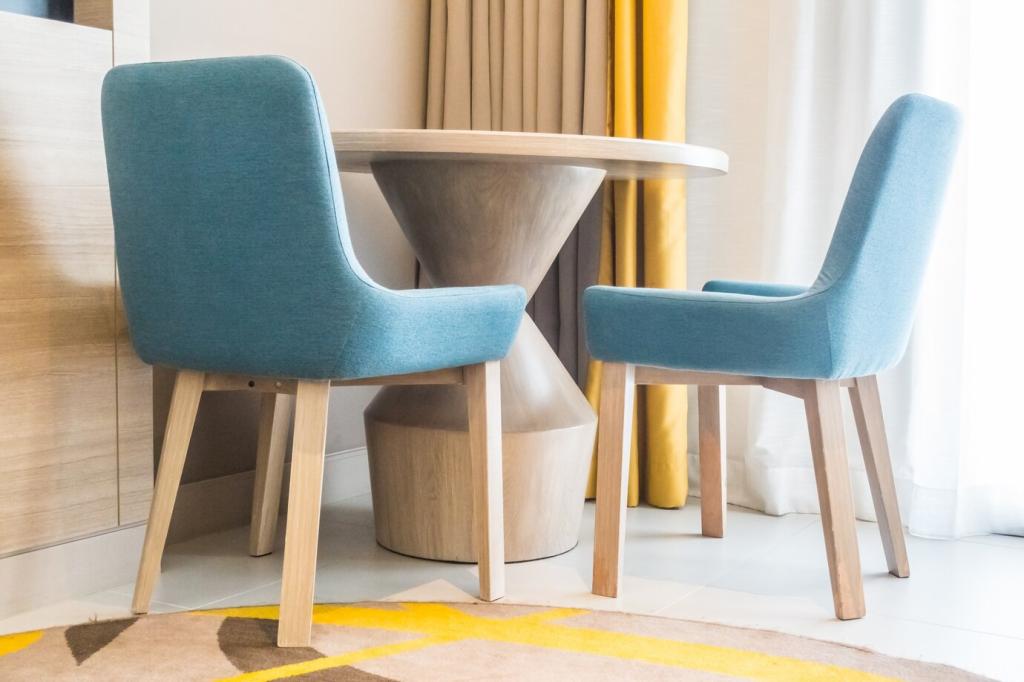
Colonial Influences on Upholstered Furniture Design
Chosen theme: Colonial Influences on Upholstered Furniture Design. Journey through the intertwined routes of trade, craft, and culture to see how colonial encounters shaped the textures, silhouettes, and comforts of upholstered pieces we live with today. Join the conversation and subscribe for thoughtful design stories.


Materials on the Move: Fabrics, Fillings, and Timbers
Indian chintz, prized for vivid resist-dyed florals, met European looms and taste, inspiring damasks and printed cottons that redefined upholstery. These fabrics carried botanical motifs, maritime colors, and hybrid patterns into parlors from Lisbon to Calcutta and Charleston.
Materials on the Move: Fabrics, Fillings, and Timbers
Horsehair and feathers once signaled European luxury, yet tropical colonies favored breathable kapok and coir for resilience in heat. Upholsterers adapted layer by layer, balancing airflow, softness, and durability to suit monsoon humidity and trade-wind breezes.
Hybrid Craft: Where Techniques Converged
Mortise-and-tenon joinery arrived with pattern books, but measurements, curves, and ornament often followed local sensibilities. In port cities, apprentices learned to translate European silhouettes through native woods, carving styles, and hand-stitched upholstery details.
Hybrid Craft: Where Techniques Converged
Cane weaving, light and breathable, dovetailed with upholstered arms and bolsters, producing chairs that stayed cool yet indulgent. The dialogue between taut cane seats and cushioned backs defined verandah living and afternoon reading under slow-turning fans.
Hybrid Craft: Where Techniques Converged
Sailors, merchants, and missionaries ferried awls, needles, and tack hammers alongside ideas. Guild knowledge blended with indigenous techniques, yielding practical innovations—stitched edge rolls, webbing choices, and finishes that survived salt air and equatorial sun.
Iconic Forms Reconsidered
With extendable leg rests, cane panels, and upholstered head cushions, planter’s chairs balanced leisure and ventilation. They evolved from European recliners, reshaped by verandah culture and the pragmatic need to rest cool after sunlit workdays.
Iconic Forms Reconsidered
Born to shield from hearth drafts, wingback chairs traveled to colonial homes where wings narrowed, seats deepened, and fabrics shifted to patterned cottons. The result: dignity and comfort calibrated for coastal breezes and evening letters.


Stories from the Workshop and the Field
When Mira reupholstered her grandmother’s Anglo-Indian settee, she found kapok clinging like cloud to the burlap. Choosing block-printed cotton, she preserved the webbing and logged each tack pattern, honoring hands that stitched before hers.


Stories from the Workshop and the Field
At dawn, a worn planter’s chair surfaced beneath tarps, its cane fractured but frame steady. The vendor recounted monsoon repairs by a great-uncle. I bought it, promised new cane, and kept the story tucked beneath the seat.
Care, Conservation, and Ethics
Before reupholstering, photograph layers, save fabric swatches, and note tool marks. Record provenance and acknowledge cultural origins in labels. Invite elders’ memories and local historians’ insights, then share findings openly to enrich collective understanding.
Stabilize cane, re-stitch seams, and humidify warping timbers gently. Choose reversible adhesives, breathable linings, and lightfast textiles. Repair invites dialogue with the past; replacement risks erasing voices that still whisper through worn armrests.
Source ethically produced cottons and sustainably harvested timbers. Credit patterns’ origins in your documentation. Hire craftspeople versed in traditional methods, and pay fairly. Share your process with readers—your transparency can inspire better practices community-wide.

Breathable layers, generous seat depth, and mixed structures—cane with cushions—remain relevant for warm climates and energy-conscious homes. Translate these principles into modern silhouettes while foregrounding cultural credit and artisan collaboration.
Contemporary Reinterpretations with Care
Use botanical prints sparingly, balancing them with plains that honor craftsmanship. Let sunlight guide fabric choices; linen-cotton blends reduce glare and heat. Share your experiments in the comments so others can learn from real rooms.
Contemporary Reinterpretations with Care
Balance History and Use
Pair a colonial-influenced settee with humble sisal, modern side tables, and books. Create approachable contrast that encourages sitting, not tiptoeing. Tell guests the piece’s story; invite their questions and memories in return.
Climate-Savvy Layering
Use breathable throws, cotton slipcovers, and ceiling fans to echo the period’s climate intelligence. These layers protect upholstery, ease maintenance, and keep rooms welcoming through seasonal shifts without overreliance on mechanical cooling.
Build a Conversation Corner
Cluster a wingback and planter’s chair around a low table stacked with material histories. Add a small note about your fabric’s origin. Ask readers to share photos of their corners; we feature favorites in our newsletter.
